On the way to the airport, after a four-day visit, travelling across the trafficked streets of the city, one thing is clear: I want to return to Prague.
And this is also the message the people at the Prague City Tourism want to convey, as explained by their Strategy Manager, Katerina Pavlitova.
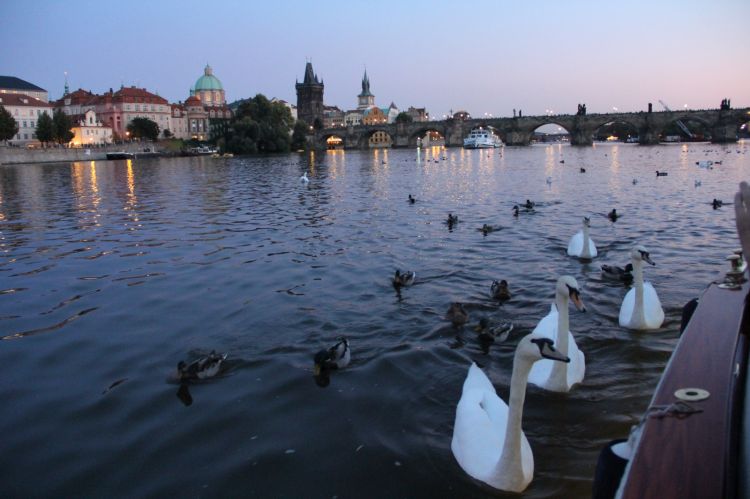
A charming image of the Charles Bridge
«Prague is considered a city to be seen once in a lifetime. But after ticking the box of the destinations to visit, tourists rarely return. We want to offer the chance of returning to Prague, not only to visit the main monuments, but for a more comprehensive experience».
From our point of view, we could linger on the touristic beauties of a marvellous, lively and liveable city. But there’s a lesser known Prague, the gastronomic, gourmet one, which doesn’t limit itself to beer, sausages and smoked ham, but goes beyond.
But it is from beer that we will start. After all, the Czech Republic has beer in its heart. No offence to the Germans, but we must remember that Pils (or Pilsner or Pilsener) was born in the Bohemian city of Plzeň (which becomes Pilsen in German), making use of the pure waters of the area, and using only Saaz, or better Žate chop, from another town in Bohemia.
For beer lovers, Prague is a bit like a fairy tale town, given that for a jug of Pilsner Urquell you’ll pay 50 crowns, less than two euros. To fully enjoy it, we recommend a stop off the centre, at Karlínská Pivnice, in the neighbourhood of Karlín: perfect draught, fresh beer straight from the tank. In Prague there’s not only the culture of beer, but also – and luckily – the culture of pouring it in the best way.
In the Vinohrady neighbourhood, instead, you must stop at Pivovar Ossegg, an urban brewery with an underground plant that makes some 2800 hectolitres each year, which are almost exclusively drank in the restaurant on the ground floor, while the headquarters of the brewery are out of town, in the ancient monastery of Osek.
Without ever losing the low-fermentation style as a point of reference, at Ossegg you can find beers with a definite and very personal character.
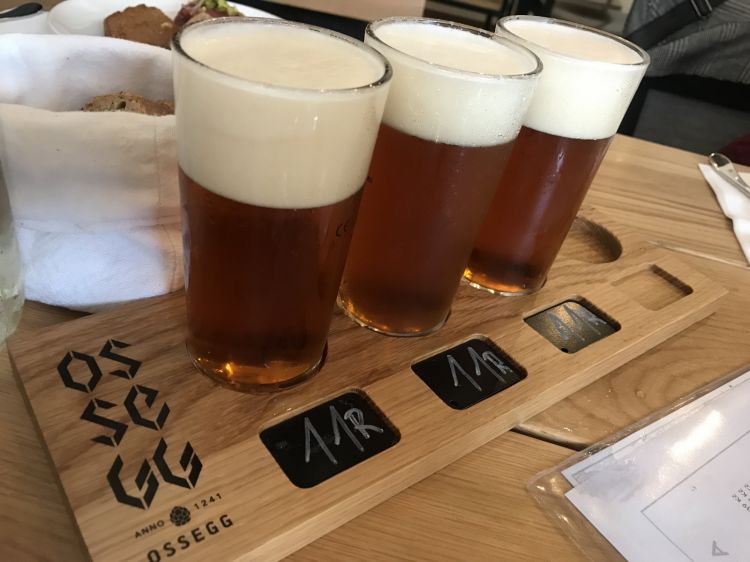
The beers from Pivovar Ossegg find an excellent match in the dishes made by chef Lukáš Holý
All excellent – breweries in the Czech Republic know their business – and perfect even when paired with the dishes from chef Lukáš Holý, who proves that the traditional cuisine of Prague can be brought to more refined standards, while remaining genuine. The smoking is very interesting and some dishes use, both as a pairing and in their preparation, the same beer from the brewery.
You’ll find more beer, and other products, at Výčep, which is the name of the draught, while výčepni is the person who serves it the best. There’s a strong beer culture in this place, again in the Vinohrady neighbourhood, but in general they focus on enhancing the link with Walachia, a region of Moravia, south of Prague.
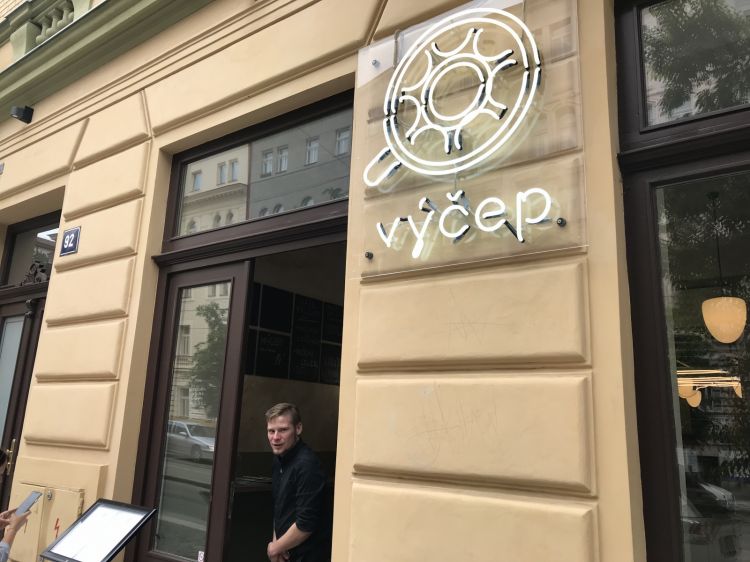
More than beer: there’s also good wine and excellent food at Výčep in Vinohrady
Hence together with the dishes from chef JiříHrachový we start to taste the wines of the Czech Republic and some spirits.
Just like at restaurant Kalina, in Malá Strana, on the banks of the river, thanks to the perfect pairings presented by talented and fun chef Miroslav Kalina.
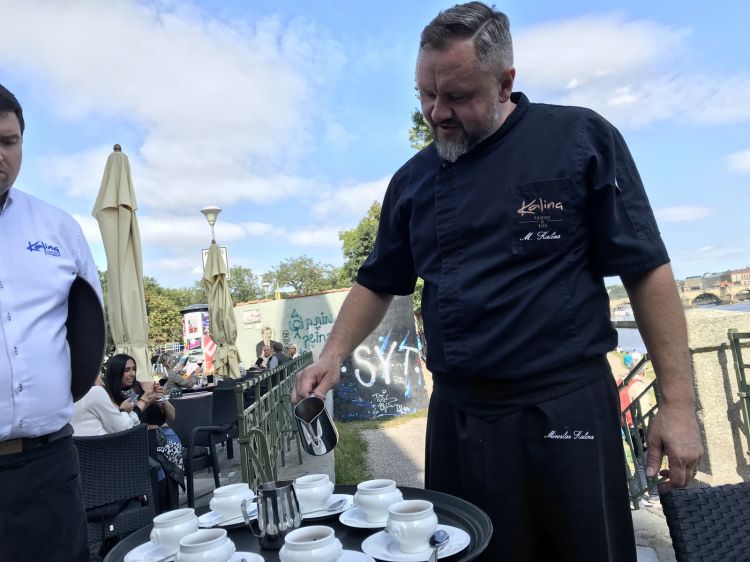
The talented chef Miroslav Kalina
To better understand Czech wine production, the advice of sommelier Klára Kollárová can come useful, when you arrive at Vinograf in Mala Strana, the new town (built around the 14th century, to be clear).
In this wine bar there are many Czech wines as well as bottles from all around the world, offering an interesting comparison of different styles. There’s also a second branch of Vinograf, underneath Charles Bridge, which only has Czech wines in the list, some 350 labels.
In this place, thanks to the collaboration with Vinařskýfond, the consortium of wineries from Moravia and Bohemia, you can get a picture of the Czech wine industry. Which means a total of 17,700 hectares of vineyards (to make a comparison, in Italy we have 629K), two thirds of which are destined to white grape varieties. Most (16,536 hectares) are in Moravia, in the south-east of the Czech Republic, on the border with Austria and the Slovak Republic. And indeed Austria has influenced the style of these wines.
As for the grape varieties, for the white wines Grüner Veltliner, Müller Thurgau and Welshriesling (Czech Riesling a close relative of Riesling Italico) are very common, while Sauvignon and Riesling (from the Rhein) are growing. As for the reds, Saint Laurent, Blaufränkisch (of Austrian origins, the first very aromatic) and Zweigeltrebe (a crossing of the two) are even more popular, but Pinot Noir is growing, from 0.8% to 4.2% over twenty years. Merlot is also growing.
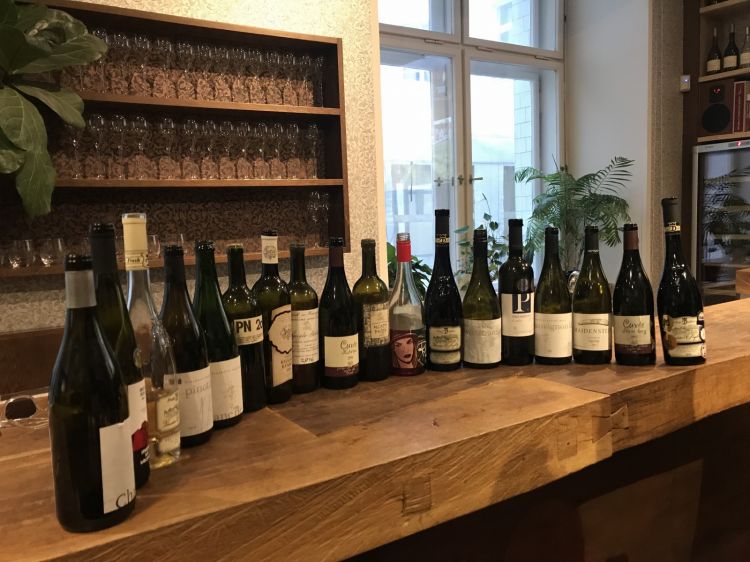
The wines tasted, thanks to Vinařskýfond, the consortium of wineries from Moravia and Bohemia
Before speaking of the wines tasted, two facts must be clear. Firstly, Czech wine is almost exclusively sold in the domestic market, and therefore it follows a rather “local” and less international taste. Attention, though: even the taste of the Czechs is evolving, especially since they have the chance (even in terms of budget) of tasting wines from all around the world, in particular from France and Italy. An international perspective that we believe even Czech producers should start to have.
Secondly, there’s no custom, among wine producers, of keeping some bottles aside to understand their evolution over time: this could turn out to be a problem, in the future.
As for the wines tasted, they were of good quality, even though none stood out in terms of elegance. They all tend to have a sugar residue higher than what we’re used to. Among the white wines, we liked the 2018 Veltlínské zelené from U Kapličky, a winery that brought also an excellent 2018 Pinot Noir. Among the red wines, we recommend the 2015 Cuvée Horní Hory from Vitis. The wines from Krásná Hora were simpler, but rather enjoyable. The wines from Richard Stávek were very peculiar, in fact they were extreme.
The trend, even here, has led to researching “natural” wines or orange wines, as proven by Veltlín, a wine bar specialised in these products. For now, however, there’s still lots of work to do.
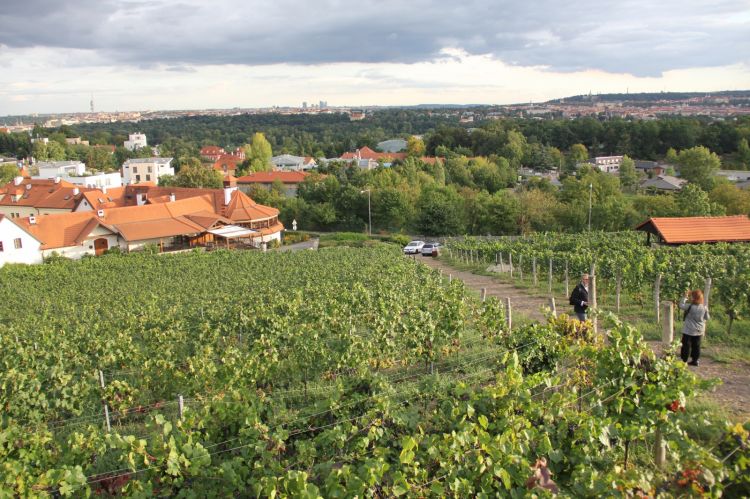
A photo of Salabka, a 4.5 hectare urbane vineyard which also includes an excellent restaurant
The case of Salabka is different. It’s a restaurant as well as a 4.5 hectare urban vineyard, at 250 metres above the sea level, a few minutes from the centre of Prague, where they make wine. In particular, in this historic vineyard, originally from the 14th century but then completely renovated in the past few years, you can find as many as 15 different grape varieties (even though the young oenologist would like to rationalise). The Pinot Nero rosé was interesting, the white wines were decent. But at Salabka you can enjoy a varied culinary experience thanks to the preparations of chef Petr Kunc, who wants to enhance local productions with an elegant and refined cuisine.
Not just beer and wine but gin too. The best place to end the day seems to be the Gin & Tonic Club: here you can find 400 types of gin and 60 different tonic waters. And nothing else. No beer, no wine, no coffee and not even water. Just Gin&Tonic.
Here they presented the gin production of Little Urban Distillery, in Brno, the only distillery in the Czech Republic that only makes gin. Robert Urbánek presented four products: the first is a classic gin, in the London Dry style, where to the juniper from the Balkans they add Moroccan coriander, Italian citrus zest and iris, finished with typical Czech fruits and herbs such as angelica, veronica, lime and elderberry, apples, sorbus and sea buckthorn. The second version is the same “entry-level” gin, but aged three months in a barrel, starting with a higher alcohol content. The third, instead, is a “Sloe Gin” spirit, an antic or London style currently being recovered. The fourth, is Winter, aromatised with aronia berries.
There’s plenty of good reasons to return to Prague. Even in terms of food. But that’s another story.
Translated into English by Slawka G. Scarso